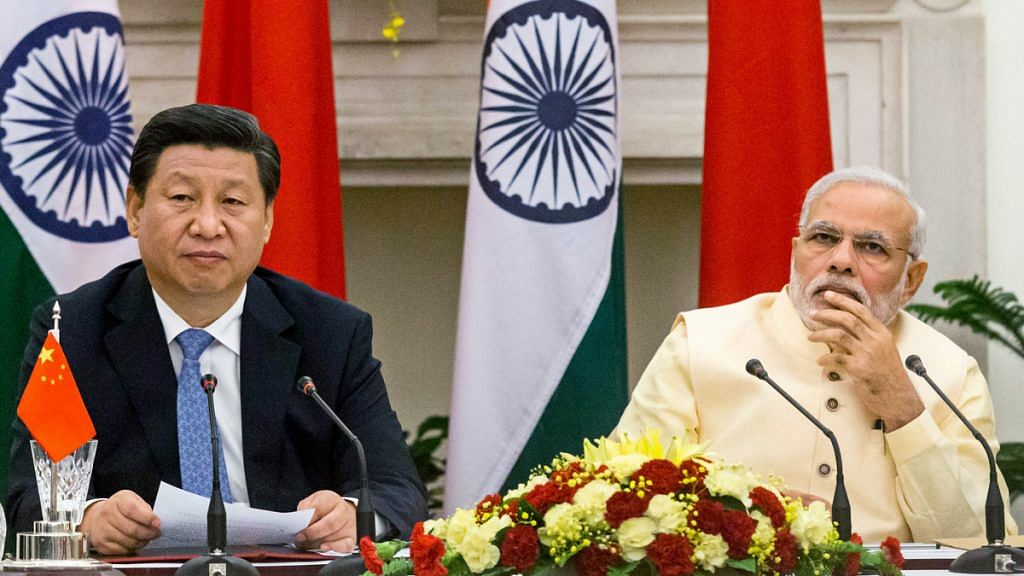New Delhi can take enough lessons from Beijing.
That China’s economy, at $14 trillion, is five times larger than India’s, at $2.85 trillion, is no secret.
But that simple and sweeping comparison doesn’t adequately capture the gulf between the two economies that are still, in many quarters, talked about in the same breath.
What does provide a startling picture of where the two countries stand is going down to the states—or in China’s case, its provinces.
Comparing state-wise GDP—drawing on China’s official figures for 2017 and estimates for India’s states—can provide a richer context in gauging where the two countries stand, and how far India needs to go to close the gap. It also sheds light on the regional disparities in both countries—and how the worst-faring states in both countries compare.
Consider Maharashtra and Guangdong, which are the biggest state economies in India and China and key centres of major industries in both countries.
Guangdong has a $1.43-trillion economy, accounting for around 10 per cent of China’s GDP—and equivalent to around half of India’s GDP. India’s biggest state economy, Maharashtra, has a $400-billion economy that is expected to grow considerably. Yet, it would not figure in the top ten among China’s 31 provinces and regions—in fact, it would rank below two Chinese metropolises, Shanghai ($475 billion) and Beijing ($436 billion).
In fact, the four Chinese municipalities—Shanghai, Beijing, Chongqing and Tianjin—are all bigger than every Indian state besides Maharashtra. India’s second biggest state economy, Tamil Nadu, would perhaps rank as the 20th biggest Chinese state.
Also read: How China deals with its 5 biggest challenges in 2019 will impact India
State-wise data also underline the regional disparities in both countries. China, for its part, faces an imbalance between its eastern and western states—seven of the eight smallest economies are all in the west—but the contrast in India is even starker.
What stands out in the data—with lessons for India—is the success story of China’s eastern seaboard, underlining the transformative impact of the reform and opening up in coastal areas. Three of the four biggest Chinese provinces—Guangdong, Jiangsu and Zhejiang—all benefited from the reforms. The first two are more than $1-trillion economies.
Also worth noting is China’s approach to some of its border provinces.
Of the seven smallest Indian states by economy, six are in the northeast. Assam (with GDP close to $41 billion) is the only one with an economy greater than $10 billion.
A few decades ago, Yunnan in the far southwest was as cut off and undeveloped much like parts of India’s northeast, but a focus on opening up the border areas—and linking them both to China’s hinterland and to neighbouring countries—has borne dividends, evident not only in Yunnan—now a $258-billion economy that would rank in the top three and is even bigger than Gujarat—but also in Guangxi ($296 billion) which is now a key link in China’s outreach to southeast Asia.
These comparisons between India’s states and Chinese provinces aren’t merely academic. They not only put into perspective the regional disparities in both countries, but also offer lessons from China’s experience in transforming some of its most backward states, which today boast economies bigger than most countries in Asia, dwarfing even those of some European nations.
However, linkages between Indian states and Chinese provinces—and sharing their experiences of development—remain far below potential, and the India-China relationship is still largely dominated by their respective capitals.
Also read: How India, China and US manage their ties will shape future of east Asia
Winds of change
That has slowly begun to change. During Prime Minister Modi’s 2015 visit, both sides noted ‘the increasingly important role played by Indian states and Chinese provinces in advancing ties and agreed to establish the Provincial and State Leaders’ forum’.
Speaking at the forum in Beijing which was also attended by Premier Li Keqiang, PM Modi made a forceful case to boost state-level engagement and told the forum that ‘in times to come, this will become one of the most important instruments for deepening our economic partnership and contact between our people.’
“As someone who has been Chief Minister for thirteen years and Prime Minister for one, this forum has a special place in my heart,” he said, emphasising it was ‘a serious conviction, born from my experience, that states have a vital role to play in the national development’, particularly in ‘large and populous countries, with a high degree of geographical, social and economic diversity’.
Also read: India is yet to recognise the soft power of making its rupee an international currency
During the visit, sister-state and sister-city relationships were struck between numerous states and cities on both sides, such as Gujarat and Guangdong, Karnataka and Sichuan.
At the time, Gujarat and Maharashtra opened up the first-ever China-dedicated industrial parks, but three years later, they remain works in progress. Other state-level linkages are minimal, with some exceptions, such as China’s Guizhou province, which has made concerted efforts to rope in Indian IT companies to push its ambitious plans in becoming a national centre for Big Data.
That meeting in 2015, however, turned out to be the forum’s only ever, while most of the relationships built after the visit still remain largely on paper.
The writer is a Visiting Fellow at Brookings India and was previously China correspondent for India Today and The Hindu.
